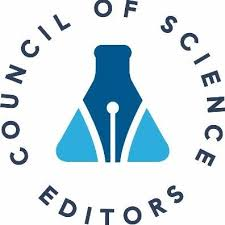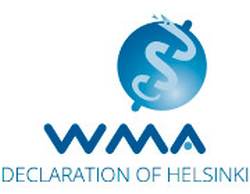Biol Sport. 2026;43:35–44
1. Bradley PS, Sheldon W, Wooster B, et al. High-intensity running in English FA Premier League soccer matches. J Sports Sci. 2009; 27:159–168. doi: 10.1080/02640410802512775.
2.
Carling C. Analysis of physical activity profiles when running with the ball in a professional soccer team. J Sports Sci. 2010; 28:319–326. doi: 10.1080/02640410903473851.
3.
Modric T, Versic S, Drid P, et al. Analysis of running performance in the offensive and defensive phases of the game: is it associated with the team achievement in the UEFA Champions League? Appl Sci. 2021; 11:8765. doi: 10.3390/app 11188765.
4.
Bradley P, Carling C, Archer D, et al. The effect of playing formation on high-intensity running and technical profiles in English FA Premier League soccer matches. J Sports Sci. 2011; 29:821–830. doi: 10.1080 /02640414.2011.561868.
5.
Castellano J, Errekagorri I, Los Arcos A, et al. Tell me how and where you play football and I’ll tell you how much you have to run. Biol Sport. 2022; 39:607–614. doi: 10.5114/biolsport .2022.106155.
6.
Morgans R, Radnor J, Fonseca J, et al. Match running performance is influenced by possession and team formation in an English Premier League team. Biol Sport. 2024; 41:275–286. doi: 10.5114 /biolsport.2024.135414.
7.
Trewin J, Meylan C, Varley MC, et al. The influence of situational and environmental factors on match-running in soccer: a systematic review. Sci Med Football. 2017; 1:183–194. doi: 10.1080 /24733938.2017.1329589.
8.
Morgans R, Mandorino M, Beato M, et al. Contextualized high-speed running and sprinting during English Premier League match-play with reference to possession, positional demands and opponent ranking. Biol Sport. 2025:119–127. doi: 10.5114/biolsport.2025.147011.
9.
Morgans R, Radnor J, Fonseca J, et al. Comparison of running and accelerometry variables based on match outcome, match location and quality of opponent in elite professional soccer players. A five-season study. Biol Sport. 2025; 42:67–79. doi: 10.5114/biolsport .2024.136092.
10.
Brito Souza D, López-Del Campo R, Blanco-Pita H, et al. Association of match running performance with and without ball possession to football performance. Int J Perform Anal Sport. 2020; 20:483–494. doi: 10.1080 /24748668.2020.1762279.
11.
Bradley P, Peñas C, Rey E, et al. The effect of high and low percentage ball possession on physical and technical profiles in English FA Premier League soccer matches. J Sports Sci. 2013; 31(12). doi: 10.1080/02640414.2013.786185.
12.
da Mota GR, Thiengo CR, Gimenes SV, et al. The effects of ball possession status on physical and technical indicators during the 2014 FIFA World Cup Finals. J Sports Sci. 2016; 34:493–500. doi: 10.1080/02640414 .2015.1114660.
13.
Liu T, Yang L, Chen H, et al. Impact of possession and player position on physical and technical-tactical performance indicators in the Chinese Football Super League. Front Psychol. 2021; 12:722200. doi: 10.3389 /fpsyg.2021.722200.
14.
Zhao Y, Liu T. Factors that influence actual playing time: evidence from the Chinese Super League and English Premier League. Front Psychol. 2022; 13:907336. doi: 10.3389/fpsyg .2022.907336.
15.
Zhao Y, Zhang H. Effective playing time in the Chinese Super League. Int J Sports Sci Coaching. 2021; 16:398–406. doi: 10.1177/1747954120965751.
16.
Altmann S, Forcher L, Woll A, et al. Effective playing time affects physical match performance in soccer: an analysis according to playing position. Biol Sport. 2023; 40:967–973. doi: 10.5114 /biolsport.2023.123320.
17.
Lago-Peñas C, García-Calvo T, López del Campo R, et al. Match running performance is similar in lower and higher competitive standards of Spanish professional soccer accounting for effective playing time. Biol Sport. 2024; 41:39–46. doi: 10.5114/biolsport .2024.132993.
18.
Lorenzo-Martinez M, Kalén A, Rey E, et al. Do elite soccer players cover less distance when their team spent more time in possession of the ball? Sci Med Football. 2021; 5:310–316. doi: 10.1080/24733938.2020 .1853211.
19.
Lago-Peñas C. The influence of match location, quality of opposition, and match status on possession strategies in professional association football. J Sports Sci. 2009; 27:1463–1469. doi: 10.1080/02640410903131681.
20.
Liu T, Garcia de Alcaraz A, Zhang L, et al. Exploring home advantage and quality of opposition interactions in the Chinese Football Super League. Int J Perform Anal Sport. 2019; 19:1–13. doi: 10.1080 /24748668.2019.1600907.
21.
Alves DL, Osiecki R, Palumbo DP, et al. What variables can differentiate winning and losing teams in the group and final stages of the 2018 FIFA World Cup? Int J Perform Anal Sport. 2019; 19:248–257. doi: 10.1080/24748668 .2019.1593096.
22.
Lago-Peñas C, Lago Ballesteros J, Rey E. Differences in performance indicators between winning and losing teams in the UEFA Champions League. J Hum Kinet. 2011; 27:135–146. doi: 10.2478 /v10078-011-0011-3.
23.
Carling C, Bloomfield J. The effect of an early dismissal on player work-rate in a professional soccer match. J Sci Med Sport. 2010; 13:126–128. doi: 10.1016/j.jsams.2008.09.004.
24.
Pan P, Peñas CL, Wang Q, et al. Evolution of passing network in the Soccer World Cups 2010–2022. Sci Med Football. 2024:1–12. doi: 10.1080 /24733938.2024.2386359.
25.
Felipe JL, Garcia-Unanue J, Viejo-Romero D, et al. Validation of a Video-Based Performance Analysis System (Mediacoach®) to Analyze the Physical Demands during Matches in LaLiga. Sensors. 2019; 19:4113. doi: 10.3390/s19194113.
26.
Linke D, Link D, Lames M. Football-specific validity of TRACAB’s optical video tracking systems. PLoS ONE. 2020; 15:e0230179. doi: 10.1371 /journal.pone.0230179.
27.
Cohen J. Statistical Power Analysis for the Behavioral Sciences. 2nd ed. New York: Routledge; 1988.
28.
Kuznetsova A, Brockhoff P, Christensen R. lmerTest: Tests in Linear Mixed Effects Models. Version 2. 2015. doi: 10.18637 /jss.v082.i13.
29.
Nakagawa S, Johnson PCD, Schielzeth H. The coefficient of determination R2 and intra-class correlation coefficient from generalized linear mixed-effects models revisited and expanded. J R Soc Interface. 2017; 14:20170213. doi: 10.1098/rsif .2017.0213.
30.
Nakagawa S, Schielzeth H. A general and simple method for obtaining R2 from generalized linear mixed-effects models. Methods Ecol Evol. 2013; 4:133–142. doi: 10.1111/j.2041-210x.2012 .00261.x.
31.
Liu T, Zhou C, Shuai X, et al. Influence of different playing styles among the top three teams on action zones in the World Cup in 2018 using a Markov state transition matrix. Front Psychol. 2022; 13:1038733. doi: 10.3389/fpsyg .2022.1038733.
32.
Fahey JT, Aldred K, Greig M, et al. Peak running speeds in professional male football: influence of division and playing position. J Strength Cond Res. 2023; 37:636–640. doi: 10.1519/JSC.00000 00000004298.
33.
Modric T, Versic S, Winter C, et al. The effect of team formation on match running performance in UEFA Champions League matches: implications for position-specific conditioning. Sci Med Football. 2023; 7:366–373. doi: 10.1080/24733 938.2022.2123952.
34.
Soroka A, Lago-Peñas C. The effect of a succession of matches on the physical performance of elite football players during the World Cup Brazil 2014. Int J Perform Anal Sport. 2016; 16:434–441. doi: 10.1080/24748668 .2016.11868899.
35.
Jerome B, Stöckl M, Mackriell B, et al. The influence of ball in/out of play and possession in elite soccer: towards a more valid measure of physical intensity during competitive match-play. Eur J Sport Sci. 2023; 23:1–23. 0doi: 10.1080/17461391.2023 .2203120.
36.
Frencken W, de Poel H, Visscher C, et al. Variability of inter-team distances associated with match events in elite-standard soccer. J Sports Sci. 2012; 30:1207–1213. doi: 10.1080 /02640414.2012.703783.
37.
Memmert D, Lemmink KAPM, Sampaio J. Current approaches to tactical performance analyses in soccer using position data. Sports Med. 2017; 47:1–10. doi: 10.1007/s40279-016 -0562-5.
38.
Song H, Li Y, Zou X, et al. Elite male table tennis matches diagnosis using SHAP and a hybrid LSTM–BPNN algorithm. Sci Rep. 2023; 13:11533. doi: 10.1038 /s41598-023-37746-1.
39.
Raabe D, Nabben R, Memmert D. Graph representations for the analysis of multi-agent spatiotemporal sports data. Appl Intell. 2022; 53:3783–3803. doi: 10.1007/s10489-022-03631-z.
Copyright: Institute of Sport. This is an Open Access article distributed under the terms of the Creative Commons CC BY License (https://creativecommons.org/licenses/by/4.0/). This license enables reusers to distribute, remix, adapt, and build upon the material in any medium or format, so long as attribution is given to the creator. The license allows for commercial use.








